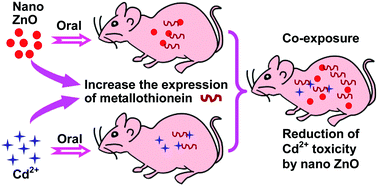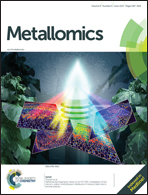Complex effect of zinc oxide nanoparticles on cadmium chloride-induced hepatotoxicity in mice: protective role of metallothionein
Abstract
The wide range of applications of ZnO nanoparticles (nano ZnO) in commercial products and the ubiquitous cadmium (Cd) contamination in the natural environment increase the chance of co-existence of nano ZnO with Cd in the surroundings. To investigate the effects of nano ZnO on CdCl2-induced hepatotoxicity in mice, the histopathologic changes, metallothionein expression, oxidative stress responses and serum biochemical parameters were determined after oral administration of bulk or nano ZnO and/or CdCl2 for seven consecutive days. Bulk or nano ZnO had low toxicity in mice. In contrast, CdCl2 led to significant hepatic oxidative damage, as indicated by hepatic histopathological abnormalities and dysfunction. Bulk and nano ZnO had nearly identical influences on the hepatotoxicity of CdCl2 in mice. Although co-administration of bulk or nano ZnO with CdCl2 had a positive cooperative effect on the hepatic uptake of Cd and Zn, both bulk and nano ZnO significantly attenuated CdCl2-caused hepatic damage via the reduction of oxidative stress. The increase in metallothionein synthesis and the reduction of Cd-induced perturbation of Zn2+ homeostasis after co-administration of bulk or nano ZnO with CdCl2 play two important roles in the protective effect of bulk or nano ZnO on CdCl2-caused hepatic oxidative damage.

- This article is part of the themed collection: Zinc in the Biosciences


 Please wait while we load your content...
Please wait while we load your content...